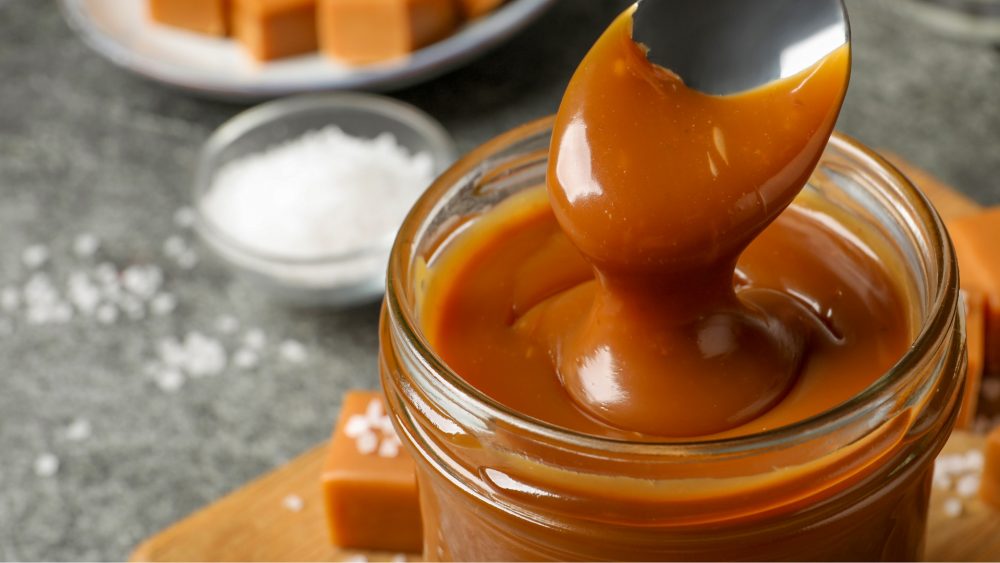It all happens quite quickly, at a high temperature, which is why some people are intimidated by homemade caramel sauce. They seek to quell their discomfort with water, adding it to the pan as a buffer against burning while encouraging the sugar to dissolve. You don’t need it, however, and keeping your caramel dry means you won’t have to boil off the added water, producing a thicker, richer caramel sauce more quickly. (Who wants to wait for caramel longer than they have to?)
Two tricks for making perfect dry caramel
There are two things you should do when making a dry caramel: Cook the sugar in a stainless steel skillet and don’t get it too hot. Making caramel in a dark pan (such as nonstick) makes it all but impossible to detect color changes, and you need those visual cues. And make sure the pan is fairly wide, about 12 inches, so the sugar has room to spread out and melt in an even layer.
Sucrose (the science-y name for table sugar) caramelizes around the fairly hot temperature of 320℉, but cranking your burner to full blast won’t get you there any faster—it will burn your sugar, though. You need to give the chemical reaction time to take place. Set your heat to medium or medium-low (especially if you’re working with an electric range), and never leave your caramel unattended.
Watch the sugar closely, but don’t futz with it. Leave it alone until it starts to melt on the edges, then gently stir the sugar, pulling it into the center of the pan in long, sweeping motions, until it is liquified.
Don’t be afraid of color
“Color is the gauge,” said Christopher Kimball. “It’s the roadmap to knowing when the sugar syrup is done. You do need the sauce to develop some bitterness, otherwise it’s just going to be sweet. You want it to get a darker color.” Don’t stop at a pale blonde, keep cooking until you reach a deep, golden brown. That darker color is an indication of better, richer flavor. Once you hit it, add a little cream and some butter to make a luscious caramel sauce for drizzling over ice cream, spreading on cake, or spooning directly into your mouth—once it cools a little, of course.
How to make a dry caramel sauce
Pour 1 cup of granulated sugar into a 12-inch stainless steel skillet and shake the pan to evenly disperse it. Set the pan over medium heat and cook, without stirring or swirling the pan, until it begins to melt around the edges and bubbles begin to pop up in the surface of the sugar. Using a heat-proof silicone spatula, gently stir the sugar, pulling it into the center of the pan, until it is liquified. Continue stirring and cook until the sugar turns deep golden brown.
Remove the pan from the heat and pour in 2/3 cup heavy cream; (it will bubble up and the sugar will seize.) When the bubbling subsides, return the pan to medium heat and stir constantly until the sugar has completely dissolved and the sauce is smooth. Stir in a couple of tablespoons of butter and a teaspoon of vanilla. Cool to room temperature before transferring to an airtight container and storing in the refrigerator for up to 5 days. Rewarm the sauce gently until slightly thinner before using.
Join the conversation on Facebook, Instagram, TikTok and Pinterest.
And if you're looking for more Milk Street, check out our livestream cooking classes with our favorite chefs, home cooks and friends for global recipes, cooking methods and more.








